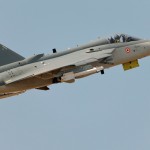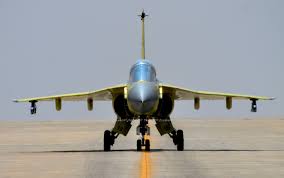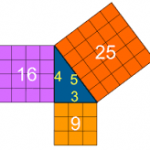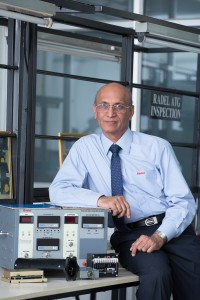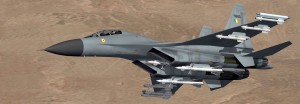It was literally in disgust that G. Raj Narayan, founder and managing director of Radel Group, quit his job as an avionics engineer in the public sector to become an entrepreneur in electronics. That was way back in 1979. Three-and-a-half decades later, in 2015, Raj Narayan’s company is now a very important supplier of test jigs and aerospace parts to Bengaluru-headquartered Hindustan Aeronautics Limited (HAL) that he had left after 10 years of work to pursue his passion.
Today, his Radel Group makes key parts and sub-systems for Indian armed forces’ Russian-origin Su-30 and MiG-29 combat planes, AN-32 cargo planes and the indigenous Dhruv advanced light helicopters. After 36 years as an electronics company and 10 years after venturing into aerospace and defense sectors, Radel is now preparing to tie-up with foreign Original Equipment Manufacturers (OEMs) by the end of this financial year in March 2016 to take its business to the global market.
“Radel is not associated at the moment with any foreign OEMs, but is keenly looking for a partnership with a few. It is hopeful of closing a couple of deals during the current financial year,” Raj Narayan told Arming India in a recent interview. He, however, refused to name the foreign companies that Radel Group is talking to for a tie-up.
Radel group consists of two independent companies. Radel Electronics is the older organization and has been in the consumer electronics products that are designed, manufactured and sold by it. Radel Advanced Technology, established in 2005, focuses on the micro, small and medium enterprises opportunities in the aerospace and defense sectors. Radel Advanced Technology is approved by India’s military certification agency, CEMILAC, as a design organization and has executed over 20 projects for HAL, the Indian Air Force and the Indian Navy, completely designed and manufactured in-house. These include airborne as well as ground test equipment.
“A strong background in aerospace and avionics is what led to an entrepreneurial stride that combined my professional capabilities as a classical musician and an avionics engineer. The return to the Aerospace and Defense sector was made possible in 2005 when the government opened up these sectors to private sector participation.
“Since electronics lies at the core of almost every system on any military platform, and almost all of them are currently procured from abroad, there is more prospect in this area than a few creative and innovative MSMEs can actually handle. The business potential runs beyond a few thousand crores, though this needs to be tackled in a holistic and planned manner by the government and the armed services. This is where a Vision Group is crucial to creating a long-term plan of action that can ensure a win-win situation for all stakeholders,” Raj Narayan said.

Targeting 60% Growth over the Next 3 Years
Radel Advanced Technology is now aiming to ramp up its operations into the global Aerospace and Defense sector, targeting an annual growth rate of over 60 per cent for the next three years.
“The aerospace and defense industry is characterized by long gestation periods. Radel has successfully crossed this crucial milestone and is now on a high growth path. This position is further reinforced with the emphasis being placed on ‘Make in India’ and ‘Defense Indigenization’ directives of the Indian government. With a strong and proven in-house design capability, the organization is very confident of meeting the growth targets as long as the government remains focused on encouraging indigenous talent and capabilities.
“Opportunities exist in all three armed services as well as Defense Public Sector Undertakings (DPSUs), but the latter need to look at Indian MSMEs as high value addition partners rather than just ‘sub-contractors’ of low value added services,” he said.
According to Raj Narayan, the Indian aerospace industry is predicted to be poised for a quantum growth over the next 10 years. “In the civil aviation sector alone, a total of around 1,300 aircraft are expected to be inducted, while in the military sector, around 400 aircraft are expected to be inducted. In addition, the current ageing fleet of the Air Force and Navy are expected to be either upgraded or fitted with indigenized equipment. All these activities are bound to result in a rapid growth of the Aerospace and Defense sector.”
Electronics content, Raj Narayan noted, constitute a significant proportion of the cost of any platform or equipment housed within a military platform. Defense electronics, being a much specialized domain with unique and stringent requirements, poses its own challenges while providing huge business opportunities.
“One of the major handicaps is the lack of a component manufacturing base, with the result that Indian equipment manufacturers have to import almost all the components. This, therefore, results in additional costs of Customs duties along with associated handling expenditure and delays. The second handicap results from the fact that the armed services themselves do not have complete technical details and knowledge of the equipment that they wish to indigenize and therefore the procurement process does not lead to a successful result,” he said.
“The solution to the above problems lies in a holistic approach to be adopted by the Defense Procurement Agencies that synergies the strengths of all stakeholders, namely, Armed Services, DPSU (who possess some of the domain expertise), large private players, who have the financial clout to invest in Research and Development, and the MSMEs, who provide the best value for money with their lean organization and innovative minds.”
Economic Reforms Can Help Overcome Sector’s Multiple Challenges
The aerospace and defense sector, he said, faced multiple challenges. “First and foremost, the Indian government needs to facilitate the creation of a healthy ecosystem for the growth of this industry through the provision of incentives as well as improvement of infrastructure. Secondly, skilled technicians and engineers are not available for this specialized sector. While engineering colleges across the country churn out graduates in thousands every year, few possess any practical exposure or experience to make them industry-ready. Hence, both the central and state governments should act as facilitators for establishment of Skill Training schools within public and private industries already operating in the sector.
“Thirdly, labour reforms that constitute a major stumbling block for sustained growth of any manufacturing organization in India, need to be implemented urgently. Fourthly, the productivity and efficiency of the government departments that are involved in import and export of goods and raw material, should be improved far above the pathetic levels existing at present. Free movement of goods from one state to another within the country, through simplified VAT (GST) is also urgently required.”
Raj Narayan felt that the present Defense Procurement Procedures (DPP) failed to recognize and encourage private sector players, especially MSMEs with proven track record and talent. “There is no weightage for quality and competence of a vendor. Therefore, the process mostly fails to enable the armed services to move towards self-reliance that they have been fondly wishing for over six decades. While the DPP has some clarifications on the process of indigenization, many of the procurement agencies are unaware of the same and hence the process is poorly implemented leading to failures and shortages.”
Within the company, the acute shortage of skilled talent in the sector was overcome by a well laid out training program for new as well as existing manpower. The trainees are exposed to the critical and stringent needs of the aerospace and defense sector through live experiences on projects, Raj Narayan, who also is the chief mentor of a training school called Drona, said.
Make-in-India Should Go Beyond Rhetoric
The Radel Group chief noted that the ‘Make in India’ remained at most a “rhetoric” than any concrete progress on the ground. “However, the slogan by itself has energized not only industries, but also DPSUs and the defense procurement agencies. A distinct push for sourcing defense equipment from Indian sources is clearly evident. However, it remains to be seen how far this will result in actual growth in the manufacture of indigenous defense equipment,” he said.
“Make-in-India needs to go far beyond just manufacturing under license from a foreign OEM. Indian companies need to be incentivized and encouraged to design and develop our own products using our own technologies and this capability will then lead to self-reliance through continuous up-gradation of technology that is also developed indigenously.”
Raj Narayan was on the opinion that no foreign company would ever part with any technology or products or processes, especially relating to military and aerospace industry. “The only route to self-reliance is through hard work and indigenous R&D. From this point of view, modification or changes to the Offsets Rules and Guidelines will only have short-term gains, if any, in terms of creating low value, low technology work being outsourced by the foreign companies.”
While this could be significant for MSMEs with no design and development capabilities or domain expertise, MSMEs with proven track record and competence need to be nurtured and supported by the government as well as the armed services, financially as well as morally, he said.
“Even a small part of the R&D funds provided to Defense Research and Development Organization could yield relatively higher returns and long term gains to the stakeholders. Notwithstanding the above, it is heartening to see that many hurdles to the implementation and expansion of the Offsets program have recently been removed. It now remains to be seen how well the foreign companies respond to the amendments and actually execute their Offsets liabilities. This would be a test of their sincerity.”
The original article appeared on ArmingIndia.


